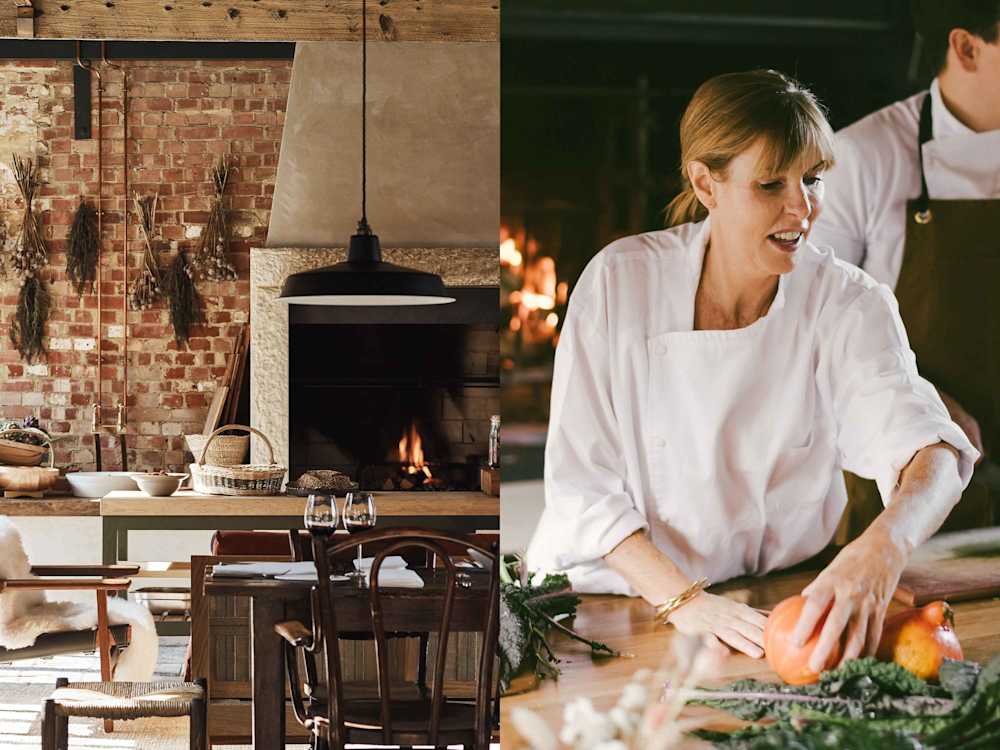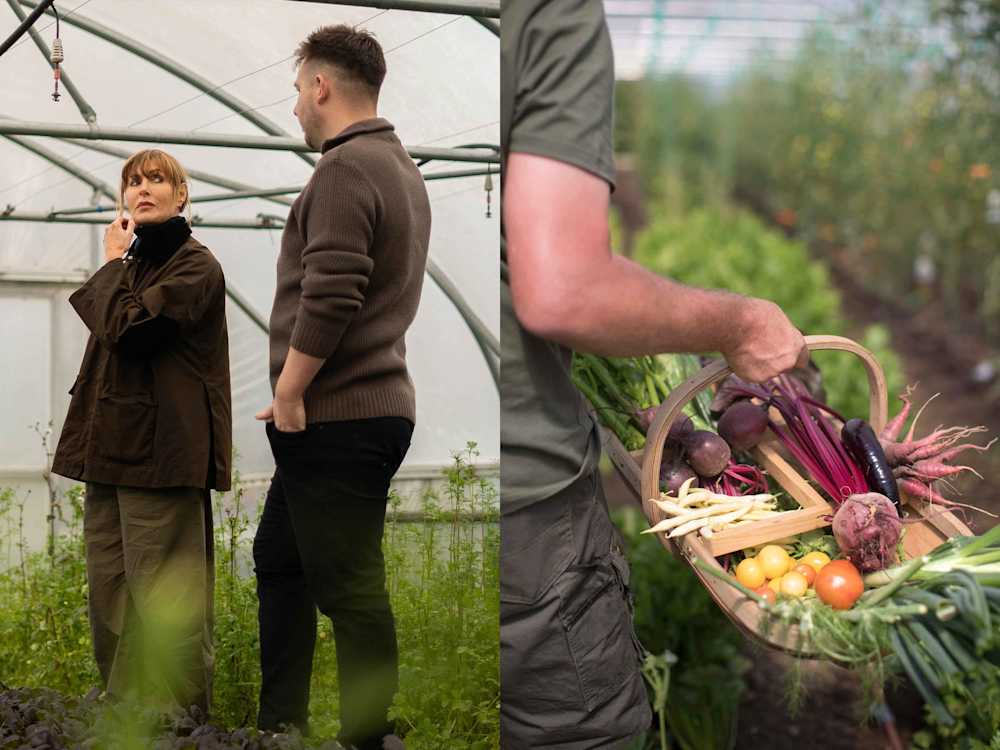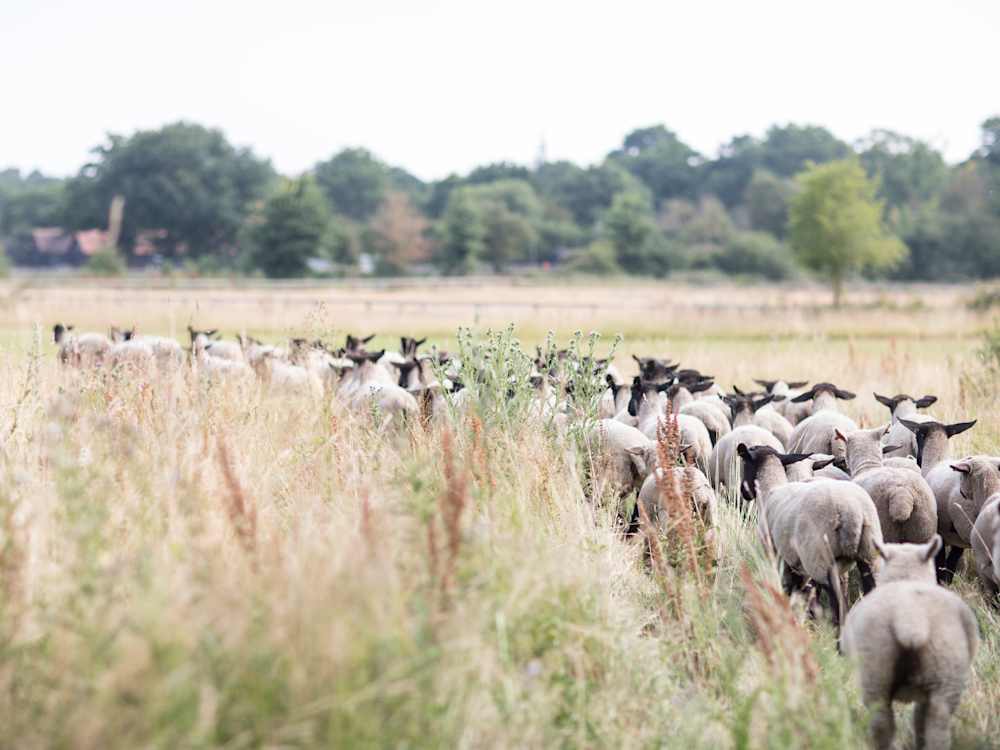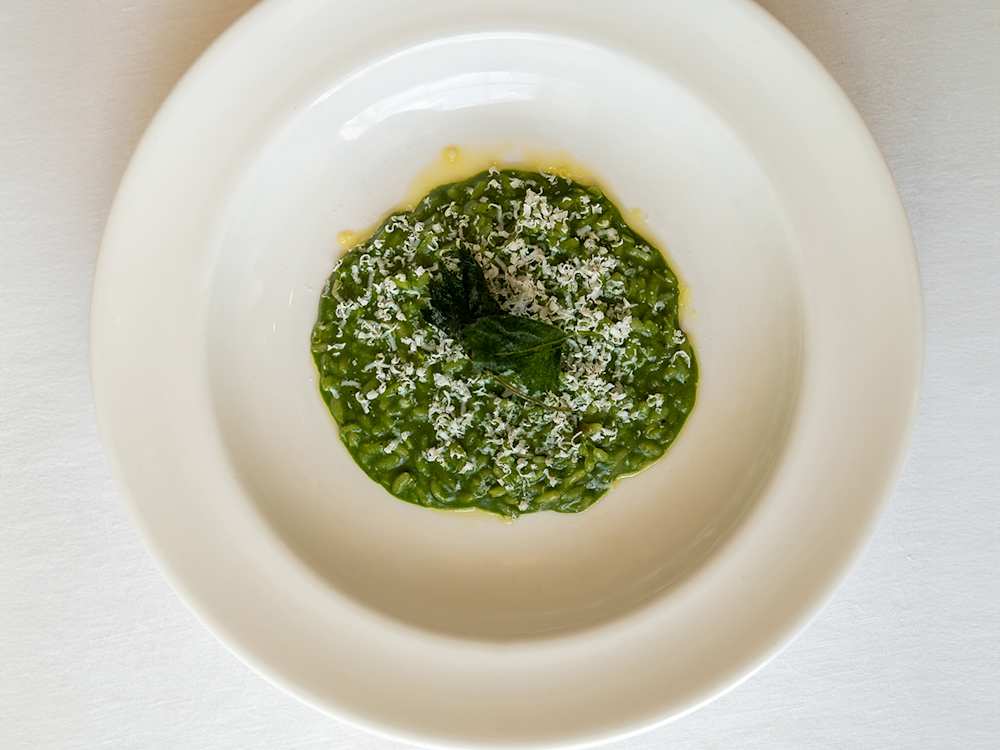Let us introduce you to the world’s most exciting hotel chefs as we guide you through the gourmet getaway spots we’re hungering for…
WHO’S IN THE KITCHEN?

Skye Gyngell’s career has grown as fruitfully as her kitchen gardens since moving from Australia to work in iconic London restaurants, but she’s very grounded, quite literally in some senses, bestowing simple vegetable dishes with fine-dining dignity and championing hyper-seasonal ingredients and a waste-not attitude. There’s the lyricism of the land to her elegant menus and many cookbooks, which has earned her Michelin and Green Michelin stars, worldwide acclaim and very many satisfied diners.
WHAT’S COOKING?
Skye’s dishes are ingredient-led, so it depends on what’s flourishing at that time, ensuring meals have ripe, rich flavours. As culinary director of Heckfield Place hotel, overseeing its Marle and Hearth restaurants, she sources fine Hampshire produce from the estate’s farm to make dishes such as courgette, sweet cicely and Comté tart; or Sutton Hoo chicken with radishes and almond aioli. It’s the perfect setting for the kind of bucolic-at-heart fare she’s honed in Petersham Nurseries’ greenhouse dining room and at Somerset House’s Spring.
RECIPE FOR SUCCESS
Skye trained in Paris at famed culinary school La Varenne, under the tutelage of lauded chef-author and founder Anne Willan. Then she took what she’d learnt to London, manning kitchens at The French House and The Dorchester, and cooking at dinner parties for the likes of Nigella Lawson, Mario Testino and Madonna.
Can you take us back to the moment, dish or experience that made you first fall in love with cooking?
I was studying law at university in Sydney, but I knew quite early on that it wasn’t for me. I’d taken a job washing up in a restaurant; just something to do alongside my studies, really. But almost immediately I found myself drawn to the energy of the kitchen. It was like a whole new world opened up to me. I loved the rhythm of it, the focus, the immediacy. I started helping with the prep and found myself completely absorbed: chopping, tasting, watching.
It wasn’t a grand decision, more a quiet certainty — I dropped out of university and never looked back. That kitchen was the beginning of everything. It gave me not only a path, but a deep sense of joy and purpose.
You grew up in Sydney — what culinary inspirations from your childhood have lasted throughout your career?
When I was growing up in Sydney, the dining-out culture wasn’t nearly as vibrant as it is today. It certainly wasn’t a big part of our family life — we didn’t really eat out much at all. What shaped me far more was the way we ate at home. My family followed a macrobiotic diet for much of my childhood, and while I may have rebelled against it at times, it absolutely influenced the way I think about food to this day.
That way of eating taught me that food should be nourishing and good for you, simple, honest and as close to nature as possible. I still carry that with me: the idea that a tomato should taste like the sun it ripened under, or that the best ingredients need very little done to them.

Where do you like to eat when you go home?
When I go back to Sydney now, I’m always amazed by how much the food culture has flourished. I love eating at places like Sean’s in Bondi, which has such a strong sense of place; Ester, for its bold, elemental cooking; Saint Peter, where seafood is treated with real reverence; and Fred’s, which feels so warm and grounded in seasonality. They each celebrate ingredients in a way that feels both thoughtful and generous, which, to me, is what good food is all about.
What was the most important thing you learned about food during your classical training under legendary authority on French cookery Anne Willan at La Varenne in Paris?
Discipline. That deep, almost reverent respect for technique and repetition — it was about building a foundation you could return to again and again. Anne had this extraordinary ability to bring clarity and structure to cooking, to demystify it without ever stripping it of its beauty. She taught me that before you can cook with intuition, you need to master the basics. That stayed with me.
The most surprising thing, though, was how much emotion and sensuality there was in classical cooking. On the surface, it’s very precise and structured — but beneath that, there’s this incredible elegance and softness. I came to see that great food is never just about technique; it’s about feeling, about restraint, about letting ingredients speak. That idea, that balance between precision and emotion, became a kind of guide for me in everything I’ve done since.
You’re a pioneer of seasonal, sustainable cookery — how has the restaurant industry become more environmentally friendly over the years?
One of the most encouraging changes I’ve seen is how much more aware diners have become. More and more people now seek out restaurants that are seasonal, responsible and thoughtful in their approach to food. And for restaurants, it’s far easier to access beautiful local produce from small-scale farms and growers, particularly here in England. When I first started cooking here, those relationships were much harder to find and build.
But with that progress has come a rise in greenwashing. There are places that use all the right words — ‘sustainable’, ‘local’, ‘organic’ — but only at a surface level. True sustainability is hard work. It means adapting to what’s available, building trust with growers, reducing waste creatively and embracing limitations. It’s not a marketing tool; it’s a way of working, every single day. The places that do it well don’t always shout about it — they just live it. And I think people can feel the difference. It’s there in the food. It’s more honest, more grounded. More real.
Your famous Spring ‘Scratch’ menu is made using so-called ‘waste’ products — how can we best use these in our own cooking?
The idea behind the Scratch menu at Spring came from a desire to look more closely — and more lovingly — at what we so often throw away. So-called ‘waste’ ingredients are often just overlooked ingredients: beet tops, slightly bruised fruit, cheese rinds, stale bread. They still have so much flavour, so much potential, if you take the time to work with them.
At home, the best way to start is by shifting your mindset. Don’t begin with a recipe, begin with what you have. Open your fridge, look in your cupboard, and ask yourself what can be made from what’s already there. A wilting bunch of herbs can become a salsa verde. Overripe fruit makes beautiful compotes or ferments. Yesterday’s bread can become today’s soup thickener or tomorrow’s croutons. It’s about being gentle and inventive with what’s in front of you.
What’s the most sustainable way to shop?
I always say: buy less, but buy better. Choose seasonal produce, grown as close to home as possible. Build relationships with your local growers or market stallholders if you can — it reconnects you to the source of your food, and you start to shop more intentionally. And above all, trust your senses, not just the labels. Smell things. Touch them. Look for beauty in imperfection. That’s where the magic so often lives.

Where do you start when conceiving new dishes?
For me, it always starts with the ingredient: what’s in season, what’s just come in from the garden, what looks and smells beautiful. I don’t sit down and design a dish from a blank slate. It’s much more intuitive than that. I’ll walk through the Market Garden at Heckfield or receive something freshly picked, and it sparks something — a memory, a flavour combination, a texture I want to explore.
I don’t usually have a fully formed vision of the dish at the beginning. It reveals itself gradually. I might start with the idea of pairing something delicate, like a courgette flower, with a broth or a soft cheese, and then build around that — layering flavour, always keeping balance and restraint in mind. I try not to force anything. If an ingredient is at its peak, it doesn’t need much from me — just a light hand and a bit of thoughtfulness. The best dishes feel inevitable, somehow, like they couldn’t exist any other way. That’s when I know it’s right.
Which one ingredient could you not live without?
If I had to choose just one ingredient I couldn’t live without, it would be really good olive oil. It’s the first thing I reach for and the last thing I finish with. I use it in everything — from dressings to drizzling over vegetables or cheese. It adds depth, softness, and a kind of quiet richness that pulls everything together. But it has to be great quality: cold-pressed, full of life, something that still tastes of the grove it came from.
What ingredient have we all been sleeping on?
Nettles deserve more attention. They grow wild and freely, yet so few people realise how wonderful they are to cook with. Early in the season, when the leaves are young and tender, they’re especially beautiful — herbaceous and full of character. I love using them in broths or pastas. There’s something incredibly grounding about cooking with what the land offers so freely.
Your cookery is influenced by your travels — where have you felt most inspired?
A memory that comes to mind is travelling to Belo Horizonte in Brazil where I was invited to cook for an event hosted by the Brazilian Embassy. The warmth of the people, the vibrancy of the produce, and the generosity of the culinary spirit there reminded me how much joy and openness can live in food.
And Italy has been the setting for many of my most memorable meals. One of the most beautiful I’ve had was in Sicily: a lunch under olive trees near Mount Etna, at Rocca delle Tre Contrade, a villa restored by friends of mine. We ate fresh olives, grilled baby squid and zucchini flowers, and roasted dorade cooked over an open fire. Everything was soulful and completely rooted in the land around us. That meal captured everything I love about cooking: seasonality, honesty and a deep sense of place.
What initially drew you to working on the dining concept at Heckfield Place?
The land. Before there was a finished space, I visited the estate and I was completely struck by the potential of it all. There was this extraordinary opportunity to build something from the ground up, quite literally. My vision was never about creating a formal or showy kind of dining. I wanted something that felt in harmony with the place — a kind of quiet luxury. The food needed to reflect the land just outside the kitchen doors. That meant not just cooking with the seasons, but living by them.
What makes Heckfield feel so special, I think, is that nothing is forced. There’s a gentleness to the experience. You feel the rhythm of the place — the farm, the gardens, the care taken in each detail. It doesn’t shout. It doesn’t need to. It’s about creating something beautiful and meaningful, and letting that speak for itself.
How do you collaborate with Home Farm at Heckfield?
Our chefs and growers work very closely, sometimes as much as a year in advance, to plan growing lists and align the menus with what the land can offer across the seasons. It’s become a natural extension of my long-standing collaboration with Jane Scotter, who’s now the head grower at Heckfield. Working this closely with the soil has changed everything for me as a cook. It’s made me more responsive and more respectful. The menu is never fixed; it evolves with the rhythm of the farm, which is exactly how it should be.

The dining experiences at Petersham Nurseries, Heckfield Place and Spring are designed to feel relaxed — how do you extend this to the kitchen?
Creating a calm, generous experience for guests starts with the energy in the kitchen. I’ve never believed in shouting or fear. Pressure doesn’t produce good food, care does. We try to build a space where people feel supported, mentored, and listened to.
What have been some of the most defining challenges and breakthroughs you’ve experienced as a woman in such a male-dominated industry?
One of the challenges, especially early on, was simply learning how to find my place and lead in a way that felt true to who I am. The kitchens I trained in were fast-paced and intense, driven by structure and discipline, which taught me a lot. But over time, I realised I could create a different kind of environment, one that felt calmer, more nurturing.
The breakthrough was understanding that I didn’t have to follow the traditional kitchen model to succeed. I could do it my own way. At Heckfield especially, working so closely with the land and the farm, there’s a natural rhythm and gentleness that’s shaped how we cook and how we work together. It’s about creating spaces where people feel respected and able to grow, whatever their background or experience.
Do you feel that kitchen culture has evolved in terms of inclusivity?
Kitchen culture has definitely evolved since I started — there’s a much greater awareness now around inclusivity, respect, and wellbeing, which is a really positive shift. I see more women in kitchens, more diverse voices being heard and a growing understanding that creativity thrives in supportive environments. That said, there’s still work to do. Hospitality can be demanding and relentless, and we need to find better ways to support people’s balance and mental health, especially as they grow in the industry.
My advice to young women would be: trust your instincts. You don’t need to change who you are to succeed. Lead with integrity, stay curious, work hard, and seek out kitchens where kindness and respect are part of the culture. They do exist — and they’re worth finding.
How do you still stay creatively energised after such a prestigious career?
What keeps me creatively energised is the ingredients themselves — walking through the Market Garden at Heckfield, seeing what’s just come into season, it still gives me the same thrill it always has. The natural world is endlessly inspiring, and because it’s always changing, no two days are ever the same.
What excites me most about food is its ability to connect — to land, to people, to memory. I still find so much joy in creating something simple and doing it well. That hasn’t changed, and I don’t think it ever will.
TIME TO SERVE

Learn how to make Skye’s in-season main
Wild-nettle risotto with mascarpone and ricotta salata
Serves four
Ingredients
– 50ml extra-virgin olive oil
– 1 brown onion, very finely diced
– 1 bay leaf
– 400g risotto rice, such as carnaroli or arborio
– 100ml white wine
– 1 litre hot vegetable stock
– 200g wild-nettle leaves, stems removed
– 80g unsalted butter
– 80g mascarpone
– 1 lemon, juiced and zested
– Parmesan
– Ricotta salata
To make the wild-nettle purée
Bring a pot of salted water to the boil. Blanch the nettles in the boiling water for approximately one minute, then remove from the water and plunge into a bowl with ice and water to cool immediately.
When cool enough to handle, gently squeeze the nettles to remove excess water. Place the cooked nettles in a blender and blitz on high speed until completely smooth. Cover the purée with parchment, placing directly on top so it doesn’t discolour, and set aside.
To make the risotto
Heat the olive oil in a pan over medium heat, then add the diced onion, bay leaf and a generous pinch of salt. Cover and sauté the onion over low heat for about 10 minutes, until it’s soft and completely translucent.
Then uncover, add the rice and stir to combine. After a minute, turn the heat back up to medium and add the wine. Let it bubble away until the smell of alcohol dissipates. Gradually add the vegetable stock, ladleful by ladleful, allowing the stock to be completely absorbed before adding any more. Stir every few minutes as it simmers.
Continue this process until you have used ¾ of the stock, then taste the rice. It should be almost completely cooked through, with just the tiniest bite in the centre and all the stock absorbed. If it’s not quite there, continue adding more stock, tasting after every addition.
Once the rice is cooked, remove the pan from the heat. Add the butter and mascarpone, then cover and allow to rest for two to three minutes.
Then uncover, add the nettle purée and fold to combine. Taste and adjust the seasoning, adding a little lemon juice and zest for brightness, and parmesan for savoury richness.
Divide into four plates, then grate over the ricotta salata and finish with a drizzle of olive oil.
Bon appetit!
If that’s whet your appetite, now explore our other Yes, Chef interviews



